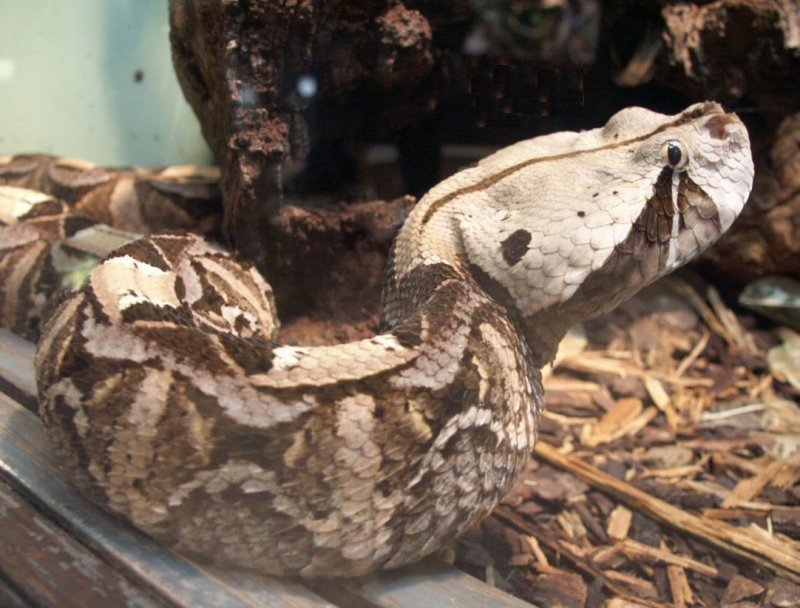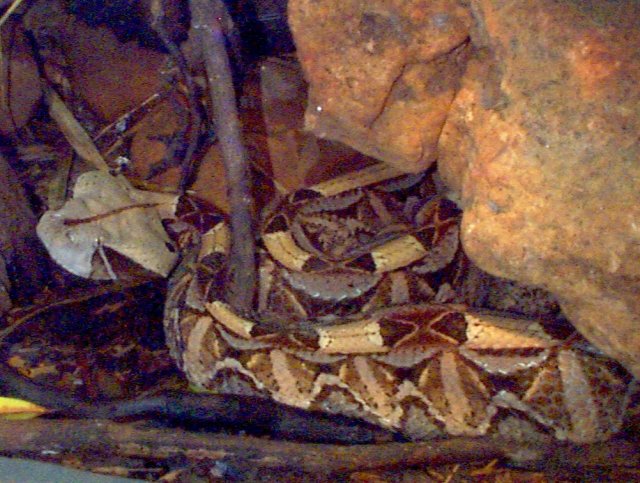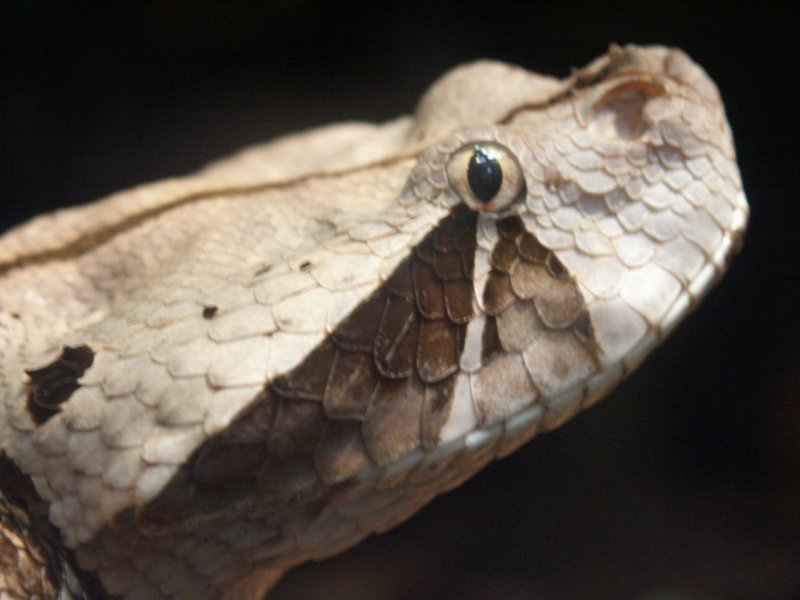
The Gaboon viper has a very large and thick body with a distinctive color pattern. The crown of his head is tan with a narrow brown median stripe. He has a pair of triangular nasal "horns," much more evident in west African individuals. The average size of an adult is about 4 to 5 feet, being the largest viper in Africa attaining weights of over 20 kg and possessing fangs up to 2 1/4 "long. Dorsal in 28-46 slightly oblique rows at mid body. Ventral 125-140; subcaudals 17-33. His coloration his very cryptic, making it difficult to spot him in the forest floor.
The Gaboon viper is a reptile of a solitary type. Once he is excited or irritated by an intruder, he inflates and makes a threatening hiss. Many people have died to a result of being bitten by him. Those that survived where the one that had amputated the part of their body that was bitten or taken a serum injection soon after they were bit. He feels as if he has to defend himself, once he is being provoked or his space is being invaded.
Because of his coloration, he is hard to spot. He is nocturnal and difficult to awake during the day time. When surprised, he remain still, flattening against the sand and making short jabs at the intruder and blowing noisily. He is said to be a "loopier" or "sidewinder," because they throw loops of their body forward in a lateral fashion. His poison fang can reach the extraordinary length of 38 mm. In biting, which he caries out with great vigor, he raises his entire fore body and injects the venom deeply into the wound.

Gaboon vipers are live bearers, bearing up to 30 young at a time. The gestation period is about 7 months. The young are about 30 cm. long (12 inches) at birth.
The gaboon viper from the zoo, only made one move the whole time I was observing him. I made some fast moves on the glass, and he responded by raising his head up a little bit. He had a flat head with his nostril on top. He had a camouflage coloration (white, green with some gray). He was wrapped around himself but I could say that he was about 3 feet maybe.

Kay Kayembe ktks1mind@hotmail.com
Sources and Links:
- http://www.calacademy.org/research/herpetology/
- http://www.manbir-online.com/htm2/snake.16.htm
frogs/frogsimp/reptiles/e31.htm
-
Animal Life Encyclopedia 6 reptiles Pg. 455-457. Van Nostrand Reinhold
Ltd. 1971.
-
American Society of Ichthyologists and Herpetologists. Poisonous
Snakes of the World. Pg. 101
- Raymond Ditmar. Reptiles of the world 1922. Pg. 325
- Gregg Madden. Personal Communication.